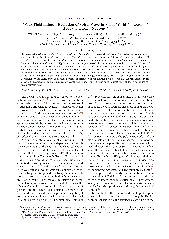摘要
An external weak electric field is introduced into the small-world networks of Hodgkin-Huxley neurons to study the control and breakup of a spiral wave. The effect of an external electric field on the neurons in the small-world network is described by an additive perturbation on the membrane potentials of neurons at the cellular level, in which an additive term V-E is imposed on the physiological membrane potential. A statistical factor of synchronization is used to measure the collective behaviour of spiral waves by changing the electric field; it is confirmed that a smaller factor of synchronization is associated with the survival of a spiral wave. In the case of no channel noise, the spiral wave could be removed under a certain intensity of constant electric field; it keeps robustly to the weak electric field when the electric field changes periodically. In the case of weak channel noise, a breakup of the spiral wave is observed when the intensity of the electric field exceeds certain thresholds, which could be measured from the curve for synchronization factors. No drift of the spiral wave is observed under the weak electric field.
